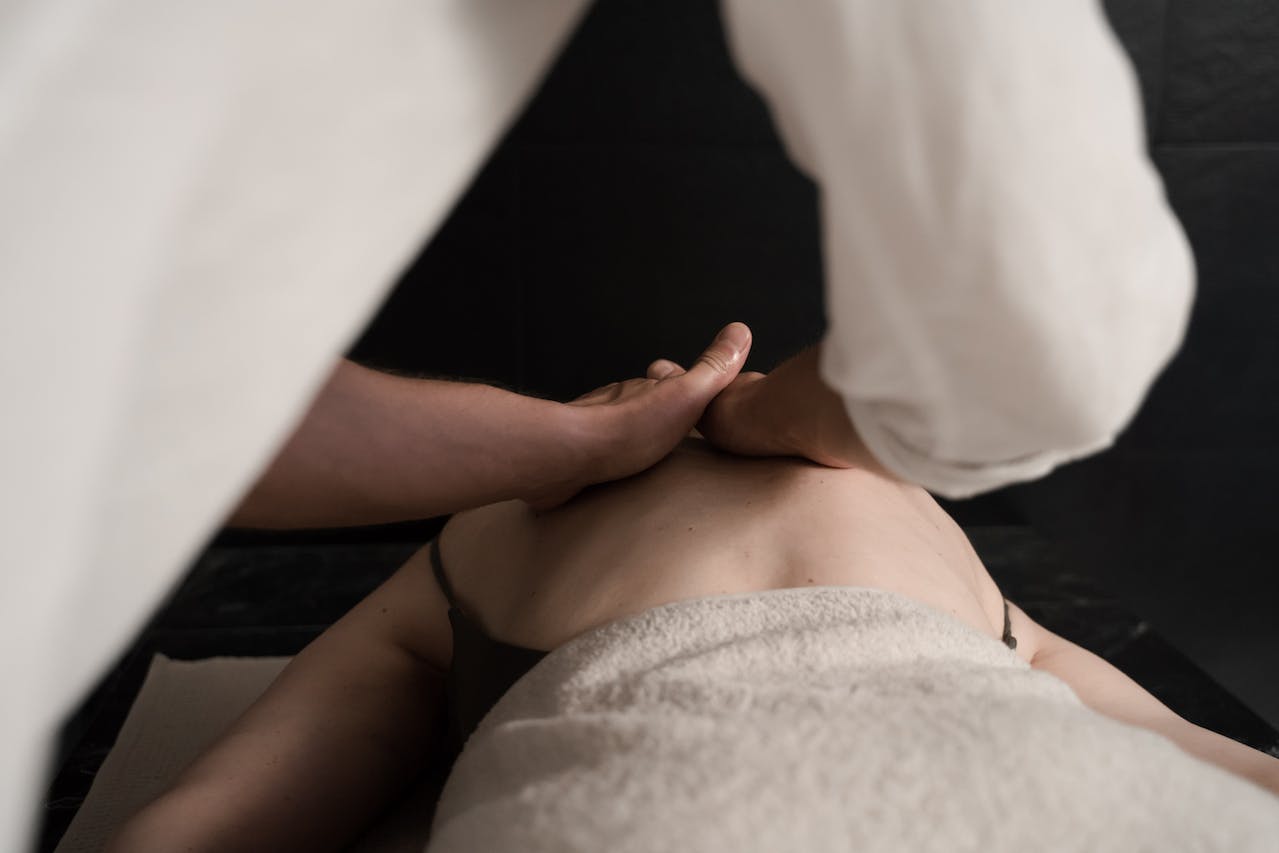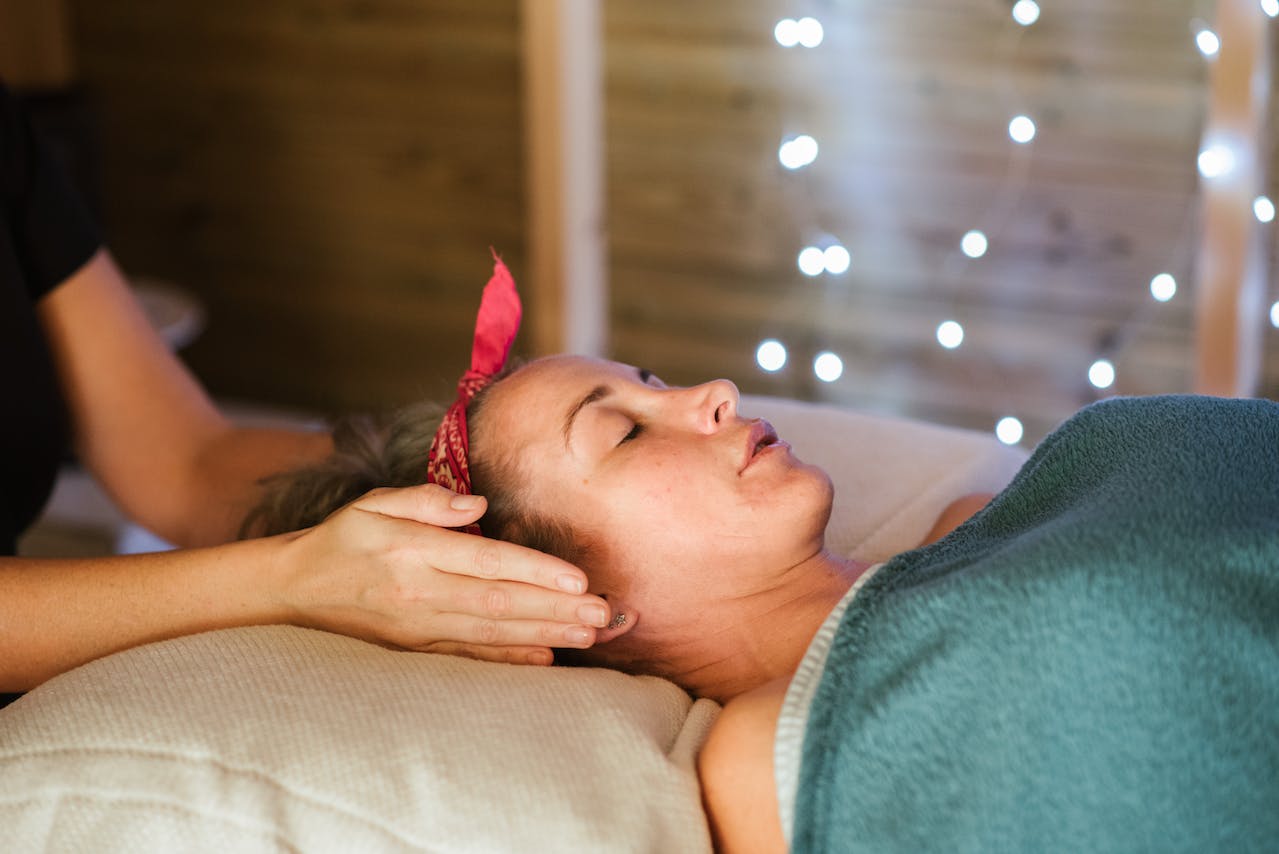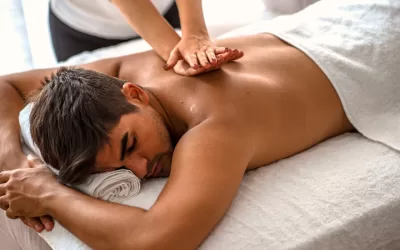Did you know that over 90% of athletes experience muscle soreness after intense workouts or competitions? If you’re part of this statistic, fret not! In this post, we’ll unveil five top-notch massage techniques tailored to alleviate those aches and pains so you can get back to peak performance in no time. From deep tissue massages targeting specific problem areas to soothing Swedish massages promoting overall relaxation, there’s a technique perfect for every athlete seeking relief from muscle strain. Whether you’re a seasoned pro or just starting your athletic journey, incorporating these methods into your routine could be the game-changer you’ve been searching for.
Benefits Of Massage For Athletes
Improved Performance
Massage is a powerful tool for athletes to reduce muscle soreness. By improving blood circulation through effleurage, massage techniques ensure that muscles receive essential oxygen and nutrients, aiding in faster recovery. This increased blood flow also helps in removing lactate from muscles post-exercise, reducing soreness and enhancing overall performance.
Athletes who incorporate regular massage sessions into their routine benefit from reduced muscle tension and improved sports performance. Regular sports massage can help relax and supple muscles, decreasing the risk of hamstring injury. With lower tension levels, athletes can move more freely during training or competitions, ultimately leading to improved agility and flexibility on the field or court.
Psychological Effects
Beyond physical benefits, massages offer psychological advantages to athletes by alleviating stress and anxiety. The calming effects of massage therapy triggers the release of endorphins – the body’s natural painkillers – promoting relaxation and mental well-being. Athletes often face immense pressure to perform at their best; thus, incorporating massage treatment as part of their recovery regimen can help them manage stress levels effectively.
- Enhanced blood circulation aids in faster recovery.
- Reduced muscle tension lowers the risk of injuries.
- Alleviation of stress through endorphin release from a minute massage promotes mental well-being.
Pre-Event And Post-Workout Sports Massage
Pre-Event Sports Massage
Pre-event sports massage is crucial for athletes as it helps prepare the muscles for exercise. By increasing flexibility and range of motion, this type of massage ensures that the muscles are ready to perform optimally during exercise. For instance, a boxer might benefit from a pre-fight sports massage to help enhance their performance in the ring by ensuring their muscles are adequately warmed up.
Sports massage before an event can significantly impact an athlete’s performance by enhancing muscle readiness and effects. This technique aids in preventing injuries and promoting peak performance by ensuring that the body is prepared for the physical demands ahead. Imagine a runner getting a pre-race sports massage minutes before the exercise to loosen tight muscles and improve their running stride.
Post-Workout Sports Massage
Post-workout sports massages play a vital role in an athlete’s recovery process after intense physical activity. These massages help reduce muscle soreness and inflammation, allowing athletes to recover faster and get back to training sooner. Consider how a football player benefits from post-game sports massages to accelerate their healing process after enduring strenuous gameplay.
Engaging in post-workout sports massages as part of an athlete’s treatment plan can help aid in preventing injury by promoting muscle recovery and reducing soreness. By incorporating these massages into their exercise protocol, athletes can ensure that they maintain optimal performance levels while minimizing the risk of overuse injuries or strains. Picture a weightlifter receiving post-training sports massages to relax tense muscles and prevent potential workout-related injuries.
Trigger Point Therapy For Muscle Soreness
Targeted Pain Relief
Trigger point therapy aims to alleviate muscle soreness by focusing on specific areas of tightness or knots in the muscles. By applying pressure to these trigger points during a massage protocol, tension is released, leading to reduced pain levels. This technique not only addresses the primary source of discomfort but also helps in alleviating referred pain experienced in other parts of the body.
Trigger point therapy is particularly beneficial for athletes dealing with muscle soreness caused by overuse or injury. For instance, if a runner experiences persistent calf pain after long-distance runs, trigger point therapy can help target the specific points in the calf muscles that are causing the discomfort. By releasing these specific points through massage and exercise, athletes can experience significant relief from muscle soreness and improved flexibility.
Effective Chronic Pain Management
Athletes suffering from chronic muscle pain often find relief through trigger point therapy. This treatment intervention offers a non-invasive way to address ongoing muscle pain resulting from repetitive strain, sports-related injuries, and help. By identifying and treating trigger points effectively with massage, athletes can manage their symptoms and improve their overall performance on a long-term basis.
In a study comparing individuals who underwent trigger point therapy and massage versus those who did not receive this treatment intervention, researchers observed a significant difference in pain levels between the two groups. Athletes who underwent trigger point therapy reported a notable reduction in soreness compared to those who did not undergo this specialized form of treatment.
Myofascial Release In Sports Massage
Benefits Of Myofascial Release
Myofascial release is a massage technique that targets the fascia, the connective tissue encompassing muscles. By focusing on releasing tension in this area, massage aids in restoring mobility and enhancing flexibility. Athletes often experience muscle stiffness due to intense physical activity, making myofascial release an effective intervention for reducing soreness and help.
This technique is particularly advantageous for athletes with repetitive strain injuries or limited movement. Physical therapists commonly use myofascial release and massage treatment to help address issues such as muscle tension and restricted range of motion caused by overuse or injury. By targeting the fascia surrounding muscle fibers, this method promotes relaxation and helps alleviate discomfort associated with strenuous workouts.
Application Of Myofascial Release
In sports massage, myofascial release plays a crucial role in improving athletes’ performance and aiding in their recovery process. By incorporating massage into treatment modalities, muscle strains can be effectively managed. For instance, athletes suffering from hamstring tightness can benefit significantly from regular myofascial release sessions and massage to reduce pain and enhance muscle function.
Moreover, individuals experiencing back pain resulting from intense physical activities can find relief through myofascial release therapy and massage. This approach not only addresses existing discomfort but also prevents future injuries by promoting better muscle health and flexibility. As a result, athletes can maintain optimal physical condition and continue training without being hindered by persistent soreness or stiffness with the help of massage.
Deep Tissue Massage For Athletes
Targeting Deeper Layers
Deep tissue massage helps focus on reaching the deeper layers of muscles and connective tissues. This massage technique is beneficial for athletes as it can help effectively address chronic pain and tightness that may result from intense workouts or sports injuries. By targeting these deep muscle layers, massage therapists can help alleviate muscle soreness more effectively compared to a regular sports massage.
Athletes often experience issues with scar tissue buildup in affected areas due to repetitive motions during training or competitions. Deep tissue massage aids in breaking up this scar tissue, promoting better healing and recovery. For example, after an intense workout session, athletes may benefit from a deep tissue massage to prevent stiffness and improve flexibility by addressing tight muscles at a deeper level.
Discomfort VS. Relief
While deep tissue massage offers numerous benefits for athletes, it’s essential to note that this technique may cause temporary discomfort during the session. However, the discomfort experienced is often outweighed by the long-lasting relief provided afterward. Athletes undergoing deep tissue massages should communicate with their massage therapists about their comfort levels to ensure an effective yet tolerable treatment session.
Pros:
- Targets deeper muscle layers
- Alleviates chronic pain and tightness effectively
- Helps break up scar tissue for improved healing
Cons:
- May cause temporary discomfort
- Requires open communication between athlete and therapist
Incorporating deep tissue massages into a massage protocol can significantly enhance an athlete’s overall well-being by improving posture and increasing range of motion over time through consistent treatments tailored specifically for athletes’ needs.
Active Release Technique For Muscle Soreness
Definition Of ART
Active Release Technique (ART) is a method that utilizes movement, deep pressure, and massage to address soft tissue injuries and muscle adhesions. This technique aims to break down scar tissue, enhance flexibility, and restore normal muscle function through massage. For athletes experiencing tendonitis, strains, or sprains, ART and massage can be particularly beneficial in promoting recovery.
ART involves the practitioner using their hands to apply precise tension and massage while the athlete moves through specific motions. By combining pressure with movement, the technique targets problem areas more effectively than traditional massage therapy alone. Athletes often find relief from muscle soreness as ART and massage help release tension and improve blood flow to the affected muscles.
Benefits Of ART
- Effective: Helps treat various conditions like tendonitis, strains, and sprains.
- Precise: Targets specific areas of concern with tailored movements.
- Restorative massage: Aids in breaking down scar tissue and enhancing flexibility.
Athletes who undergo ART sessions typically experience reduced muscle soreness post-workout due to improved circulation and decreased tension in the muscles. The combination of deep pressure and movement makes this massage technique highly effective at addressing localized issues within the muscles.

Incorporating Stretching In Sports Massage
Benefits Of Stretching During Sports Massage
Stretching during a sports massage is essential for athletes. It helps improve flexibility and muscle lengthening, enhancing the overall benefits of the massage. By incorporating stretching and massage into the routine, it promotes muscle relaxation and reduces stiffness effectively.
Athletes who include stretching in their sports massages experience improved hamstring flexibility and enhanced tissue elasticity. These changes not only prevent injuries but also contribute to better athletic performance by increasing range of motion and reducing the risk of strains through massage.
Importance Of Dynamic Stretching Techniques
Dynamic stretching techniques are an excellent way to integrate stretching into a sports massage session. Unlike static stretches, dynamic stretches involve continuous movement that mimics actions performed during physical activities.
Using Massage Gun And Foam Roller For DOMS
Benefits Of Foam Rolling And Massage Guns
Foam rolling and massage guns are valuable tools for athletes to alleviate muscle soreness, especially delayed onset muscle soreness (DOMS). These tools aid in self-myofascial release by breaking down lactic acid buildup in muscles through massage. By using foam rollers or massage guns, athletes can increase blood flow to the muscles, which helps reduce tightness and discomfort post-workout.
Regular use of foam rollers or massage guns offers several benefits. They can expedite recovery time after strenuous exercise sessions by targeting specific areas of tightness or soreness through massage. Athletes who incorporate massage into their routine often experience improved flexibility, reduced muscle stiffness, and enhanced overall performance during workouts.
Tips For Maximizing The Effectiveness
To maximize the effectiveness of foam rolling and massage guns for reducing muscle soreness in athletes:
- Consistency: Engage in foam rolling or use a massage gun regularly as part of your recovery routine.
- Target Specific Areas: Focus on areas that feel particularly tight or sore after workouts. Massage
- Proper Technique: Ensure you are using the correct technique when utilizing these tools to avoid injury.
When incorporating massage techniques into your recovery regimen, it’s crucial to listen to your body. If an area feels overly sensitive while using a foam roller or a massage gun, adjust the pressure accordingly. Combining stretching with foam rolling and massage can further enhance its benefits by promoting better circulation and flexibility.
Timing And Considerations For Using Massage After A Workout
Post-Workout Timing
After an intense workout, it’s crucial to allow your muscles time to recover before opting for deep tissue or sports massages. Waiting 24-48 hours post-exercise is ideal as it gives the muscles a chance to start the healing process naturally. This delay helps prevent further strain on already fatigued muscles.
Lighter massages, such as myofascial release, can be beneficial sooner after working out. These gentler massage techniques can help improve blood flow and alleviate muscle tension without causing additional stress on the body. Incorporating these lighter massages shortly after exercise aids in promoting quicker recovery and reducing muscle soreness effectively.
Individual Factors To Consider
When scheduling post-workout massages, several individual factors should be taken into account. Muscle recovery varies from person to person based on factors like fitness level, age, and overall health condition. Considering one’s tolerance level towards deeper pressure during a massage session is essential in preventing any discomfort or potential injury.
- Waiting 24-48 hours allows natural healing.
- Lighter techniques like myofascial release aid in quicker recovery.
Factors like training goals play a role in deciding when to schedule post-workout massages.
- Fitness level influences how quickly muscles recover.
- Age can impact the body’s ability to bounce back after intense workouts.
Closing Thoughts
You’ve now unlocked the secret to soothing those achy muscles like a pro with a massage. By incorporating these massage techniques into your routine, you can kick soreness to the curb and keep performing at your peak. Remember, consistency is key! Don’t just use massage as a quick fix; make it a regular part of your recovery plan. Your body will thank you for the TLC, massage, and you’ll notice the difference in how you feel and perform. So, go ahead, give these massage techniques a try, and show your muscles some love!
Frequently Asked Questions
1. Is Deep Tissue Massage Suitable For All Athletes?
Deep tissue massage is beneficial for athletes with chronic muscle tension but may not be suitable for everyone. Athletes should communicate their pain tolerance levels to the therapist to ensure a comfortable massage experience.
2. How Does Trigger Point Therapy Help In Reducing Muscle Soreness?
Trigger point therapy targets specific points of muscle tension, helping release knots and alleviate soreness. By applying pressure to these areas during a massage, therapists can promote relaxation and improve blood circulation, aiding in muscle recovery.
3. Can Active Release Technique (ART) Be Used As A Standalone Treatment For Muscle Soreness?
While ART can effectively address tight muscles and improve range of motion, it is often more impactful when combined with other massage techniques tailored to an athlete’s needs. Integrating ART into a comprehensive treatment plan yields better results.
4. What Are The Benefits Of Incorporating Stretching Into Sports Massage Sessions?
Stretching during sports massage sessions helps enhance flexibility, reduce stiffness, and prevent injuries by loosening tight muscles. The combination of massage and stretching promotes overall mobility and contributes to improved athletic performance.
5. When Is The Best Time To Schedule A Post-Workout Sports Massage Session?
Optimal timing for a post-workout sports massage is within 1-2 hours after exercise when muscles are warm and receptive to manipulation. This time frame allows for enhanced circulation, faster recovery, and maximum relief from muscle soreness.

Unlocking Peak Performance: Elevate Your Athletic Abilities With Medicinevolution’s Specialized Massage Therapy!
Are you an athlete facing the challenges of muscle soreness, sports injuries, or striving for optimal performance? MedicinEvolution is at the cutting edge of combining massage therapy and sports science to propel you toward your peak physical condition. By leveraging the latest in sports massage techniques, MedicinEvolution targets the specific needs of athletes, addressing the root causes of your muscular discomfort and enhancing your recovery process. Say goodbye to the limitations of muscle stiffness, sports-related injuries, and the repetitive strain that hinders your athletic progress—as MedicinEvolution delves into the unique demands of your athletic body, steering you toward significant improvement. Their expertly crafted massage therapies are designed to transition you away from the discomfort and challenges restricting your performance.
If you’re contending with persistent muscle soreness, injuries, or the daunting barriers to achieving your full athletic potential, MedicinEvolution’s specialized approach, rooted in the synergy of massage therapy and athletic science, is tailor-made for you. Don’t let the hurdles of sports injuries or muscle discomfort dictate the boundaries of your athletic journey—take the initiative and book your session with MedicinEvolution today! Embark on a path with their athlete-focused massage therapy techniques and begin advancing towards a stronger, more resilient, and performance-enhanced athletic life. Your body and mind, freed from the constraints of discomfort, will thank you for it!





